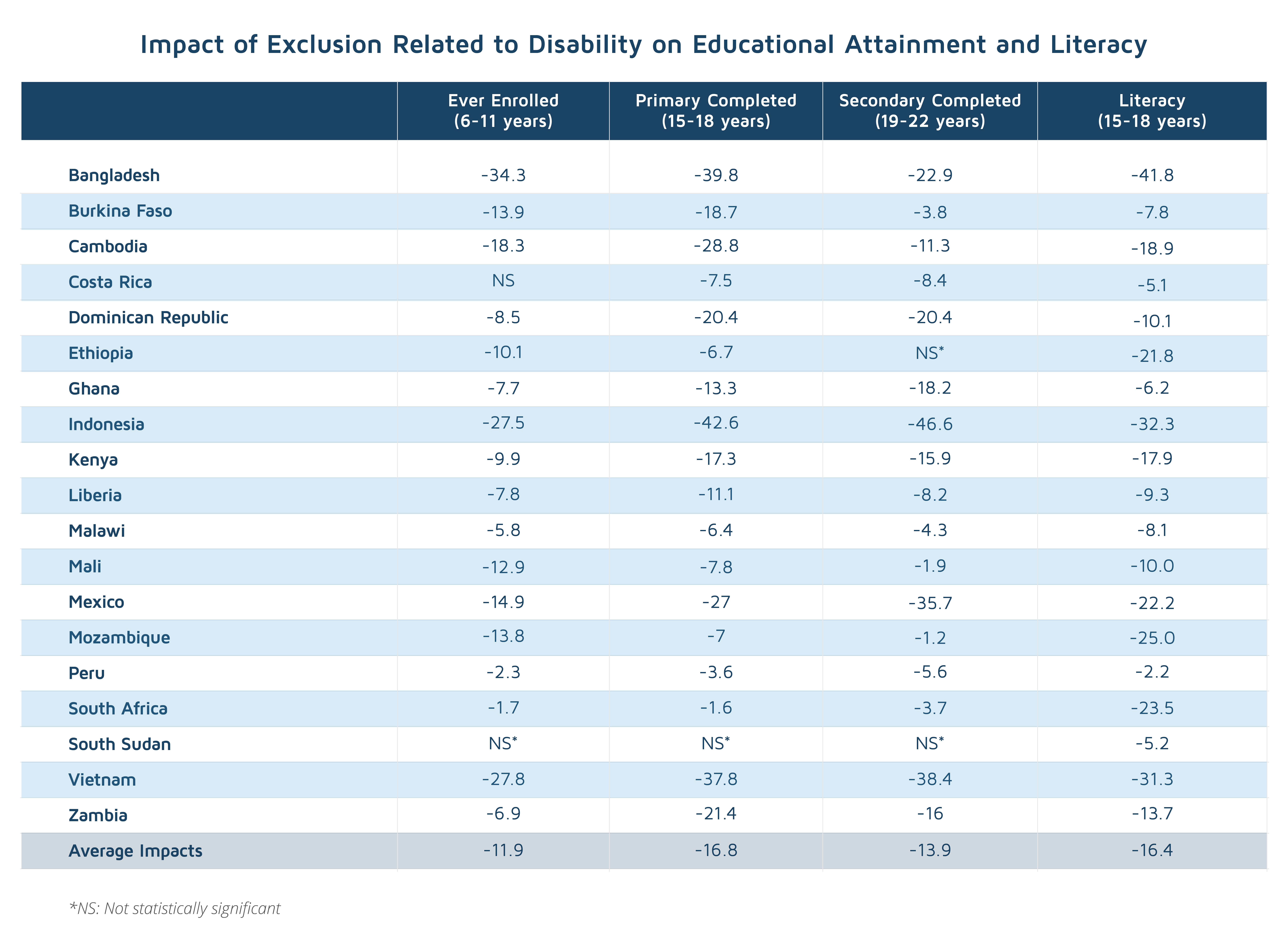Disabled children continue to be excluded from education and even those who are enrolled at schools are often left out of the system on the basis of disability. An estimated 35 million primary and secondary school-age children with impairments do not attend school and almost 85% of these have never experienced learning in a traditional classroom. Although the barriers are often very basic, they can have a significant impact on the ability to enroll, attend, participate, and learn in school environment.
Traditional education has failed to meet the needs of excluded groups such as disabled children but the tough difficulties they face in becoming part of the schooling process could be eased with a proper approach, according to the International Commission on Financing Global Education Opportunity. School facilities and materials are inaccessible to them, the curriculum has not been adapted and teachers lack the necessary ability to provide appropriate individual learning support and assistance. Furthermore, high levels of discrimination still persist within communities causing these children to drop out of the education system or, worse still, being kept isolated at home.
Disabled children have worse learning outcomes
Countless children in low- and lower-middle income countries suffer from malnutrition, worms, malaria, and high levels of disability, all of which affect their ability to learn. Providing a healthy school environment, with adequate nutrition and simple medical care, many disabilities could be preventable, and therefore children’s access to schooling ensured.
Roughly 10% of primary school students in developing countries have visual disabilities, but very few of them wear glasses. Education experts insist that the educational system should encompass the needs of every child and involve identifying innovative ways to help them to integrate into mainstream education by adapting the classroom, materials and teaching techniques. Simple low-cost measures such as the provision of glasses, large print books, hearing aids and mobility enhancements could represent a significant improvement.
The literacy rate of children with impairments is lower by 15% than that of those without any deficiency. Despite their poor learning outcomes, they are more likely to remain enrolled when provided with inclusive qualitative institution.

Recognizing the complex challenges in facing the educational needs of disabled children requires seeking innovative measures. The evolving pandemic has put more pressure on leaders to rethink the inclusive education that has left the most vulnerable children out of the system.
Disabled children affected as coronavirus has closed schools
Online classes may be largely helpful for a traditional student but, for a disabled student and their parents who had to become teachers almost overnight, the task is impossible. Many online platforms are not compatible with assistive technology such as listening and FM systems for children with hearing impairment or other various tools for children who struggle with writing, reading, listening or computing and organizing. Schools struggle to provide distance instruction for students with disabilities and to become creative enough to meet the new circumstances. Teachers and researches warn of the long-term impact on children with special needs who will return to school having significantly regressed.
The crisis that has put the education of disabled children on hold highlights the needs to reshape inclusive learning. Before the corona outbreak has hit the educational system, the 2030 Agenda had pledged access for disabled children to educational institutions and the promotion of lifelong learning opportunities for all. The Inclusive Education Initiative (IEI), launched by the World Bank in 2019, supports countries in fostering more inclusive educational systems. Three pilot project countries, Nepal (US$1.93 million), Rwanda (US$1.90 million), and Ethiopia (US$ 2 million) have begun work on developing disability-inclusive education.
IEI experts assess emerging needs and solutions to respond to the educational impacts of COVID on the millions of children around the world, especially those with disabilities. Redesigning and implementing inclusive education innovations requires timely and high-quality data concerns all children – a sector that should be strengthened.
DevelopmentAid offers up to date information from the sustainable development sector. New funding opportunities, including tenders and grants in the education sector are added daily to our web platform. We will track the reforms in the educational sector and provide our readers with accurate and relevant information. Subscribe to DevelopmentAid Newsletter.

